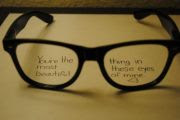Question : What is Your Film Festival?
Answer :Your Film Festival is a global competition to find the world's best storytellers, connect them with a global audience, and provide one deserving entrant with a truly career-changing opportunity. To participate, just submit a 15-minute, story-driven video of any format, style and genre. Your entry could be a short film, web-series episode, TV pilot, or something else -- as long as it’s story-driven.
After submissions are whittled down to 50 semi-finalists, audiences from around the world will cast their votes, choosing 10 finalists. The finalists will travel to Italy, where their work will be screened at the 2012 Venice Film Festival, and a grand prize winner will be chosen by a world-class jury of industry professionals, and rewarded with a $500,000 production grant to work with Your Film Festival Limited (or its designee) to create a brand new work for the world to see.
Question : Why should I submit to Your Film Festival?
Answer : The Internet has revolutionized how people consume stories. It’s free. It’s accessible. And it’s global. You’re no longer bound by cinema screens and distribution deals. You are an independent creative and you’ve got a story to tell. Your Film Festival is where independent and aspiring creators like you get to do more than just showcase raw talent. You get the chance to blow people away with it. And if your work wins at Venice, you’ll be working with a world class team dedicated to bringing your next creative vision to life.
Question : Is there an entry fee?
Answer : No! There are no entry fees for entering Your Film Festival.
Question : Will this affect my work's ability to get into other festivals and awards?
Answer : Many festivals allow submissions that have been previously distributed online. In fact, there are some prestigious festivals that actually source some of their selections from the internet. If you’re interested in submitting your work to another festival, just be sure to read their Terms and Conditions for any possible restrictions.
Question : What is Your Film Festival Limited?
Answer : Your Film Festival Limited is a subsidiary of Scott Free Films Limited which was formed in 1995 and is the world class film and television production vehicle of acclaimed film directors, brothers Ridley Scott and Tony Scott. Recently Scott Free has produced several highly acclaimed features including the international hits Robin Hood, The A-Team, and Unstoppable; the indie films Cyrus and Welcome to the Rileys; and the documentary Life in a Day, directed by Kevin Macdonald, a film which tells the story of a single day on earth as seen through the eyes of thousands of YouTube users across the world.
Question : What is the timeline?
Answer :
Events | Start - End |
Open Call for Entries | 2/2/2012 - 3/31/2012 |
Voting Period | 6/1/2012 - 7/13/2012 |
Finalists Announced | 8/1/2012 |
Venice Film Festival | September 1-3, 2012 |
Grand Prize Winner Announced | 9/3/2012 |
Question : Do I need a YouTube account to participate?
Answer : Yes, you’ll need a YouTube account in order to submit your video. Once you create an account, you’ll also be asked to sign up for the YouTube Partner Program. The YouTube Partner Program enables you to share ad revenue from your videos. Enrollment in the YouTube Partner Program is not a requirement for entry. If you’re just interested in watching the semi-finalist videos, you don’t need an account.
Question : How long can my work be?
Answer : It can be up to 15 minutes long.
Question : What formats and genres do you accept?
Answer : Any format, style and genre is welcome, so long as it's story-driven. It can be a short film, the first episode of a web series, or whatever else qualifies as a story-driven video. Fiction narratives and non-fiction documentaries are welcome.
Question : Who can participate? How old do I have to be?
Answer : You must be at least 18 years of age and above the age of majority in your country.
Question : Can I submit more than one entry?
Answer : Absolutely. You are welcome to submit as many entries as you like, so long as they are all story-driven and were not publicly shown or distributed before January 1, 2010.
Question : What language must my film be in?
Answer : You can submit your video in any language. If your video contains dialogue in a language that is not listed below, you must provide English captions or subtitles for that dialogue :
• English
• Spanish
• Portuguese
• German
• Russian
• Italian
• Japanese
• French
In the case that your entry is not in one of the above languages, and does not already contain English captions and subtitles, you can use YouTube's captioning and translation tools.
Question : What rights do I need?
Answer : You must have rights in and to all contributions to and material in your entry, including for example any trademarks, logos, names, likenesses, previously existing material and musical material that appears in your entry, the contributions of all writers, cast and crew and any locations appearing in your entry. These rights must be cleared worldwide for non-exclusive online/internet (including internet television), in-flight and film festival exploitation through at least December 31, 2013. If you have granted any of these rights on an exclusive basis to a distributor, broadcaster or other third party in any territory your entry is not eligible.
If selected as a semi-finalist or alternate, you may be required by to provide copies of these clearances. These sample forms are intended primarily for reference and in most cases are meant to clear the relevant material or contribution for use in all media (rather than just those media required for this competition). Even if you intend to use any of these sample clearance forms, they will probably require customization by you or your professional advisers. You are solely responsible for ensuring you have obtained all necessary clearances and for obtaining your own professional advice on the terms of such clearances.
Question : Am I granting YouTube an exclusive right to my entry?
Answer : Not at all!
Question : Are there any rules for what I can not submit?
Answer : Your entry must be story-driven and abide by the YouTube Terms of Service. It also can not have been publicly exhibited or distributed prior to January 1, 2010. Beyond that, it’s entirely up to you.
Question : My video has already been featured in other film festivals or contests. Can I still enter?
Answer : You bet you can. Again, as long as the video was not publicly played before January 1, 2010, it is eligible for Your Film Festival.
Question : Can I use music?
Answer : Absolutely! But remember, whenever you include someone else’s work (like music) as part of your video, you must possess all of the appropriate rights and licenses. For the purposes of Your Film Festival, this includes online/internet (including internet television), in-flight and film festival rights. Remember, if any music appears in your entry, even if it’s in the background, you must clear it. If you are using any recording, you must also clear that separately. Music clearance can be complex, time-consuming, and expensive (particularly for any pre-existing music and/or recording which you intend to license), so make sure you leave plenty of time to obtain clearances and seek professional advice if you are unsure about how to do so. Again, if selected as a semi-finalist or alternate, you may be required to provide copies of these rights and clearances.
Question : What are the best specifications for uploading my footage to YouTube?
Answer : YouTube accepts most digital video formats. However, for optimal playback, we suggest that you use the compressions.
Question : Does my entry need to be publicly viewable?
Answer : No, not at all. You may upload your entry as either public or unlisted. Unlisted means that only people who know the link to the video can view it, and the video will not appear in any of YouTube's public spaces (such as search results, your channel, or the Browse page).
Your entry is only required to be publicly viewable if it is selected as a semi-finalist.
Question : Will my submission be viewable on the channel after I submit it?
Answer : Only the 50 semi-finalists, as selected by Scott Free and their curation team, will be available for viewing on the Your Film Festival channel. Semi-finalists will be divided evenly across 5 global regions: North America, Central and South America, Europe, Africa and the Middle East, and Asia and Australia. Only the semi-finalist films will be viewable on the competition website.
Question : When will I know if I am selected as a semi-finalist?
Answer : Semi-finalists and alternates will begin to be notified on or about April 16, 2012.
Question : What will my video be judged on?
Answer : For the purposes of determining semi-finalists, entries will be judged on:
• Storytelling
• Creativity and Originality
• Screenplay and Actor(s) Performances
• Technical Execution : Camera/Sound/Lighting/Editing
• Overall Impression
Question : How many semi-finalists are there?
Answer : There are intended to be 50 semi-finalists.
Question : Where will the semi-finalist videos be available for viewing?
Answer : The semi-finalist videos will appear on the Your Film Festival channel and on YouTube, on any device or platform in which YouTube is available, including desktop, mobile devices, and internet enabled televisions. They will also appear on Emirates Airlines in-flight entertainment systems (ICE) and at the 2012 Venice Film Festival.
Question : How does voting work?
Answer : Only the 50 semi-finalists, as selected by Your Film Festival Limited and their curation team, will be available for viewing on the Your Film Festival channel. Semi-finalists will be spread across 5 global regions: North America, Central and South America, Europe, Africa and the Middle East, and Asia and Australia. Only the semi-finalist films will be viewable on the competition website.
Question : What happens if I’m selected as a finalist?
Answer : You’ll receive a trip, courtesy of Emirates Airlines, to the 2012 Venice Film Festival where your video will be screened as a part of the opening days of the Festival. You’ll also have a spotlight shined on you as a storyteller, with videos about your inspiration and storytelling journey featured on the Your Film Festival channel. Additionally, Your Film Festival Limited will reserve the right to approach you about a potential development deal for future projects. Finally, you’ll be asked to prepare a concept for what you would do, if awarded the grand prize production.
Question : How does the grand prize selection work?
Answer : A grand prize jury of industry professionals, including Ridley Scott, will judge the 10 finalist films on the following criteria :
• Storytelling
• Creativity and Originality
• Screenplay and Actor(s) Performances
• Technical Execution: Camera/Sound/Lighting/Editing
• Overall Impression
• The quality of their Grand Prize concept
• The jury will then choose a winner, who will be announced at a Your Film Festival ceremony, streamed live from Venice in September 2012
Question : What happens if I win the grand prize?
Answer : If you are awarded the Grand Prize at Venice, you'll receive a $500,000 USD production grant to work with Ridley Scott's award-winning producers at Scott Free to create a new original work intended for distribution on YouTube. You'll work with Your Film Festival Limited (or its designee) to develop your concept shortly after the 2012 Venice Film Festival, and then you'll be off to write your script.






